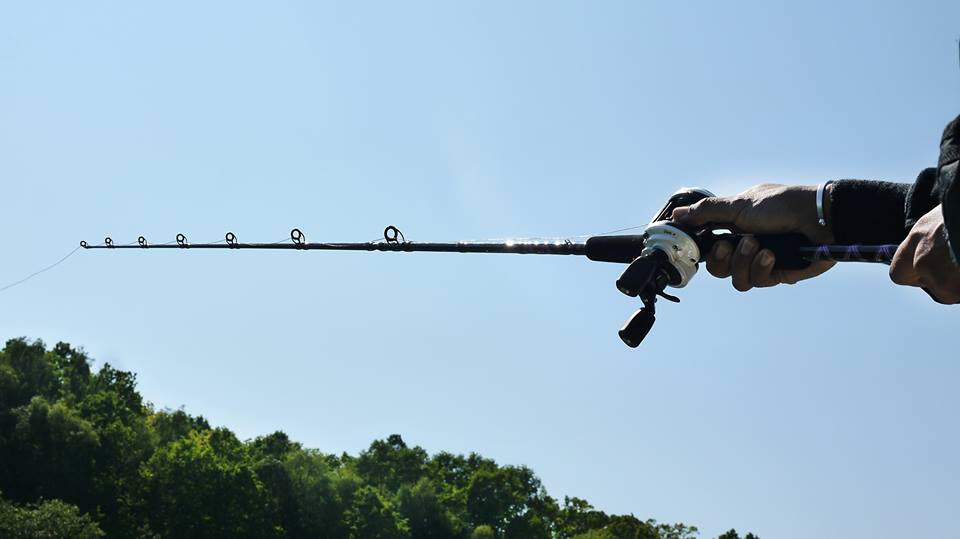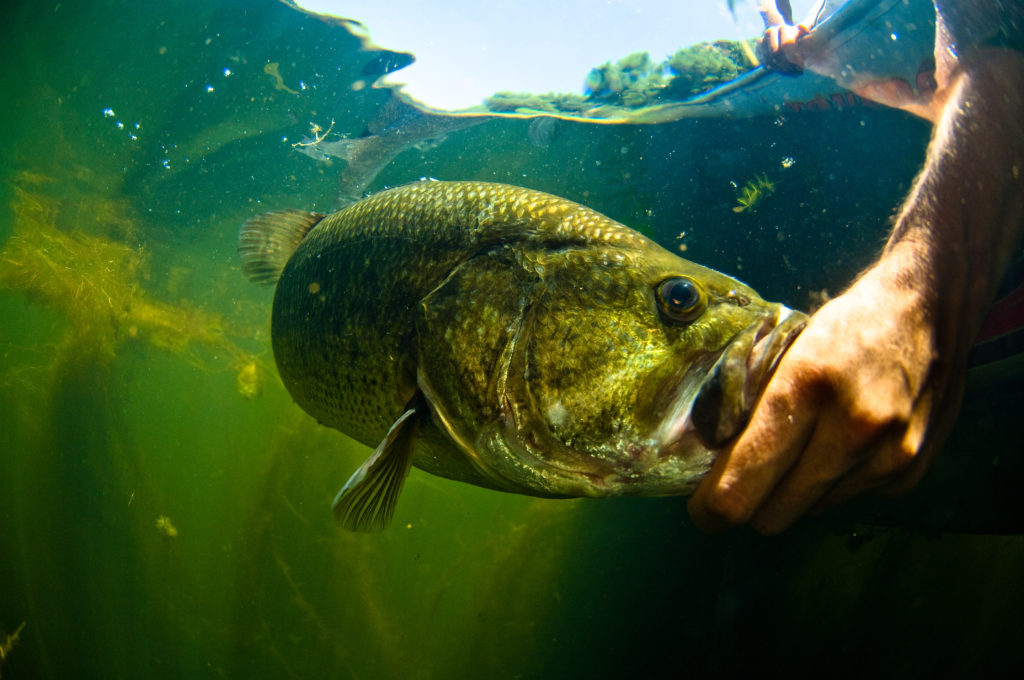
As with any sport, choosing the right equipment for a given technique is essential in fishing. This is all the more true in lure fishing with the profusion of techniques and products that have recently emerged. To respond to this, manufacturers have developed rods specific to each type of lure for more precise casts, fairer animations, more detectable touches and more effective combat. So many significant advantages for those who know how to choose their lure fishing equipment in a thoughtful way.
However, it is difficult for the uninitiated to navigate among this variety of models ... Here is why we wanted to share with you some tips that will allow you to more easily choose your fishing rod according to the lures with which you want to fish.
A look back at the anatomy of a fishing rod
Choosing the perfect fishing rod for lure fishing, of course, starts with knowing the different parts that make up a fishing rod, and how they affect your lure, hooking, and fight with the fish, first.
Whether it is a casting rod or spinning, single strand or multi-strandedA lure fishing rod is made up of three main parts: the heel, the body and the scion.
- The heel is the larger end of the fishing rod, the one the fisherman holds in his hand. The smaller its diameter, the easier it is to hold the fishing rod in your hand and the lower the weight of the assembly.
- The tip is the thinnest and most sensitive end of the fishing rod. It is the first part of your rod to feel the vibrations of your lure and to detect any possible attack.
- The body of the fishing rod is made up, among other things, of the reel seat and the rings through which the line or braid will pass.
We will speak of "blank" to designate a fishing rod naked, without rings or reel.
Now that you know the anatomy of a fishing rod, you should at least consider three elements in the composition of a lure rod: his power, his action and its length.
A good power / action combination allows for longer and more precise casts for a given lure or fishing technique. Add to that a good length and the combination of the three will give you a optimal control of your lure, your animation and your fish. The three elements put together will also prevent you from unnecessary fatigue over time.

Lure Fishing: Defining the Power of a Rod
The power of a rod is the amount of pressure an angler needs to exert to bend it. Very powerful rods will require more pressure to bend, while less powerful rods will bend much more easily. The manufacturers have classified the rods according to 3 main categories:
- Heavy or H
- Medium or M
- Light or L

In some cases, there are intermediate levels such as Medium / Light (ML), Medium / Heavy (MH) or even Extra Heavy (XH). Manufacturers of high-end rods also classify rods with a numbering system to describe the wattage rating. This nominal numbering generally oscillates between 1 and 5 (1 = Light and 5 = Heavy).
Here is a summary table of the powers compared to the weights of the lures:
| UL | Ultra Light |
1-5g |
| L | Light |
3-12g |
| ML | Medium Light | 5-20g |
| M | Medium | 10-30g |
| MH | Medium Heavy | 15-50g |
| H | Heavy |
20-80g |
| XH | Extra Heavy |
> 100g |
Lure fishing: Defining the action of a rod
Rod action describes how the rod blank behaves when force is applied to it. In a more simplified way, the action of a rod describes the level of curvature of a rod to which pressure has been applied. The actions are quite similar among most manufacturers although some still link the action to the power (H, M or L). Typically, brands use the following categories:
- Slow
- Moderate
- Fast
- Extra-Fast.

The action variations describe where the rod stops bending and transfers all of the power to the heel of the rod. A rod with Extra-Fast Action Lures will bend less than a quarter of the rod before transferring power to the heel. Conversely, a Slow action will bend almost or even more than a third of the length of the rod.
The action of a rod balances the power of the rod during the throws and ensures the fighting with the fish. It influences the throws, on the scion sensitivity and on the speed at which it transfers the bite of the hook to the end of the rod. A slower action will allow you to cast lighter lures, while a faster and heavier action is better suited to heavier lures.
The action of a lure rod is also useful when fighting a fish. A Slow action is for example useful to prevent a fish like the black bass from freeing itself when it jumps in the air because the action of the rod absorbs the movements of the fish. However, a Slow action also makes hooking a fish more difficult because the response time is slower.

As a general rule, a lure fisherman fishing with triples will rely more on the attack than on the hooking itself to secure his fish. This is therefore more suitable for slower rods. Conversely, a faster action will be better suited to lures with a single hook such as soft lures, the spinnerbaits or the jigs, techniques for which strong shoeing is generally required.
To explain how the different power and tip actions improve casts and hooks, let's compare for example two types of lures whose aerodynamics and the number of hooks are totally different: the cranckbait and the spinnerbait.
Cranckbait fishing
For this type of lure, a fisherman will rather need a medium power / action set, for several reasons.
Everyone will agree that cranckbaits generally have treble hooks. Treble hooks generally have a very short shank, leaving very little room for the barb to penetrate the flesh of the fish, and rightly so. This type of hook is designed beforehand to grab the surface part of a predator's mouth and not to penetrate all of it.
You would also agree that most cranckbaits have at least two treble hooks, which gives you 6 chances of getting a hook caught in the fish's mouth. According to this characteristic and above all for the sake of safety for the fish itself, it will therefore not be necessary for a lure fisherman to carry out a heavy hooking in order to be able to hope to hook a fish.

A fishing rod of power and medium action, by bending more easily, will allow the fish to take more time to engage the lure and the fisherman to ensure his catch without having to make too hard a hook that would tear the skin. or even the mouth of the fish. Perch, trout, black bass and sea bass have particularly fragile skins. You might as well avoid damaging them.
A slower action rod also makes casting easier. The weight of the lure will flex the tip of the rod, generating a transfer of energy that is released as the rod regains its shape. This therefore allows a longer cast.
Action and power must of course be balanced with the weight of the lure. A light lure will not bend the tip of the rod unless the rod is Light and Slow. Conversely, a lure that is too heavy for a rod that is too Light or Slow will prevent you from using its mass transfer correctly.
If you are fishing with heavier lures, select a faster action. A good rule of thumb is to use the lightest action possible to effectively cast a lure.
In addition, these lures have a great resistance to water when they are brought back, the flexibility of the rod will dampen these vibrations to avoid pain on the arm.
Spinnerbait fishing
When fishing with spinnerbaits, use at least an M or H power rod with a fast action.
When a fish attacks your lure, strong hooking is necessary to get the hook well into the jaw of the fish. It may require a bit of force. As the imperfect aerodynamics of the spinnerbait also negatively affect the casting distance, you must therefore balance the action of your rod by taking into account a variety of factors.

The size of the lure is the most controllable element. As with the crankbait, a slow action will allow for greater mass transfer and longer throws. However, spinnerbaits are generally heavy to cast lures. They stir up a lot of water and are therefore also hard to bring back. If the action of your rod is too light, the accuracy of the cast decreases, the detection of weaker hits and the less effective shoeing. A Medium / Heavy rod with fast action provides excellent balance for most spinnerbaits up to 1/2 Oz. When fishing with heavier lures, faster action will allow you to cast better.
We have only talked about two types of lure fishing here. Think about these examples and apply them to other fishing techniques.
What about other techniques?
For lure fishing techniques such as topwaters, the jerkbaits , we will instead choose a Moderate or semi-parabolic action. This action allows us to animate the hard lures with good sensitivity and very easily.
For soft baits, we don't hesitate to choose Fast action or Peak action. It is the action that will bring the most sensitivity to others. The flexibility of the rod reduces the transmission of the bite while a rigid rod will amplify it. Fishing with soft lures, whose animations consist of more or less releasing the lure, are often synonymous with discreet touches. This is where a rod with a lot of sensitivity will become a real asset.
Finally, as big fans of black bass fishing, we are also used to using very powerful rods (H, even XH) and very fast actions for fishing with specific lures such as jig fishing or texan. Indeed, these techniques very often involve fishing in very congested areas. When attacking the fish, we must therefore shorten the duration of the fight as much as possible and release the fish as soon as possible in order to prevent it from clinging to branches or the like. A powerful and fast action rod is therefore necessary in this type of fishing.

Lure fishing: Defining the length of a rod
The subject of rod length often leads to much debate among anglers. Longer rods can compensate for certain errors by balancing the pressure applied to the rod, or can even improve casting distances. On the other hand, they are very bulky, less manageable and heavier than a shorter rod. At Rodmaps, we believe that the length of a rod should only be limited by the angler's ability to use it. Remember, your rod should be an extension of your arm, so make sure you choose wisely.
An all-purpose length, both on board, boat or float-tube, is in our opinion between 2m and 2m20. This type of length will not bother you in almost all lure fishing techniques. If you are a beginner looking for a lure rod that can cover a maximum of technique, we recommend a Medium rod with a length between 2m and 2m20 with a moderate-fast action.
Our fishing guides throughout the region are also on hand to advise you on buying your tackle. In their company, you'll have the chance to practise several lure fishing techniques, and therefore to have several quality rods on hand. So don't hesitate to get in touch with them, because there's nothing like practice to help you make the right choice.




